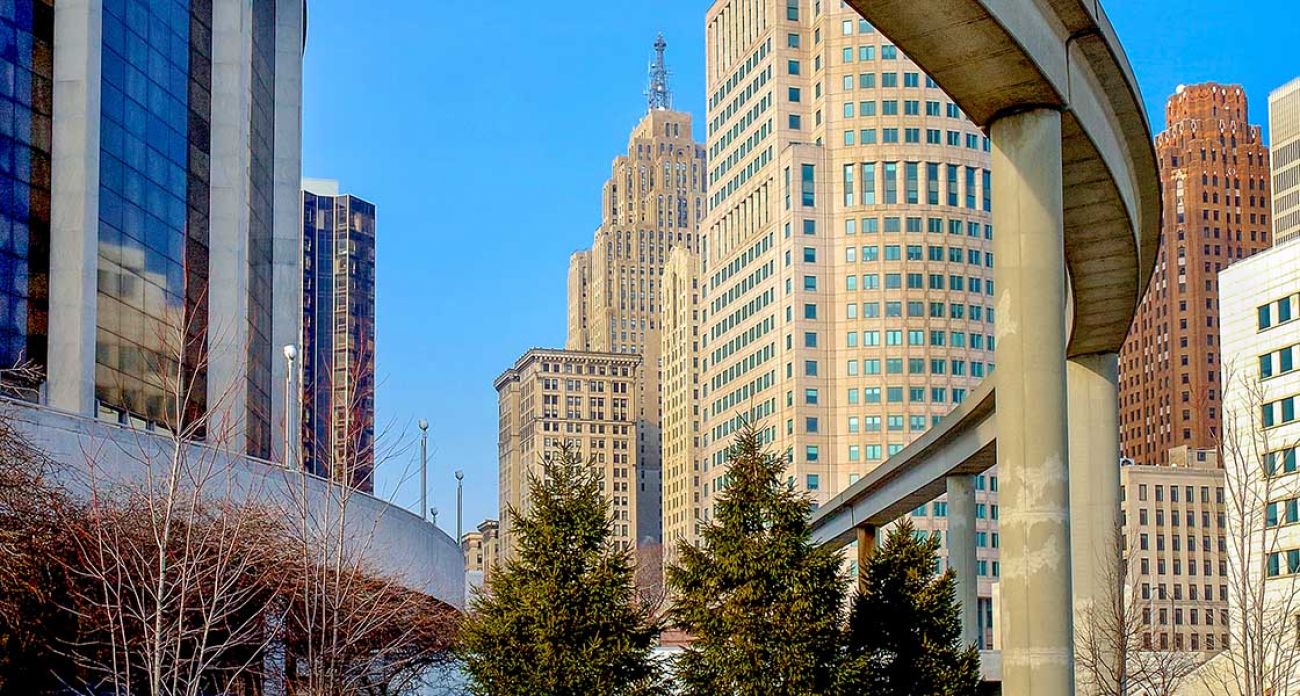Nearly 200 Michigan communities are financially distressed, despite economy

Michigan comprises 83 counties and 533 municipalities, including 280 cities, 253 villages, and 1,240 townships. Most local governments grew out of a 19th-century survey that divided the state into a grid of square townships, each measuring 6 by 6 miles.
Like many larger states, Michigan can sometimes seem like several different states in one. Nearly half of the state’s residents (4.4 million) live in southeast Michigan counties of Wayne, Oakland, Macomb, Livingston and Washtenaw, while another 1 million are in Grand Rapids and its surrounding suburbs.
Except for a handful of larger cities, much of the rest of the state is largely rural.
Despite the differences, urban and rural areas are bound by common concerns.
Chief among them: money. The state of Michigan considers 139 cities, 36 townships and 15 villages “financially distressed,” meaning they’re losing population or property values or poorer or have a higher unemployment rate than the state average for three of the past five years.
They run the gamut from cities including Jackson, Kalamazoo and Southfield to rural communities such as Oscoda, Eagle River and Newberry in northern Michigan.
Dollar drain
Communities rely on two sources of revenue to provide basic services: property taxes and revenue sharing provided by the state. Both have taken serious hits in recent years.
The rate of growth of property taxes is capped by the state constitution, while property values have only in recent years begun to return to levels before the 2007 housing crash. Revenue sharing began to decrease in the early 2000s before bottoming out in 2012 and rebounding. Last year’s payments of $1.1 billion, though, are still $200 million less than 2001. That doesn’t include inflation.
A 2018 report from the state Treasury concluded that most municipalities weathered the storm.
“Even with rising costs, local units have found ways to control expenditures to keep them from rising faster than revenues. The evidence shows that general fund deficits are down, fund balances are up, and governments are keeping costs below revenues.”
In many cases, cities accomplished that by slashing workforces. From 2001 to 2016, Michigan lost 4,000 municipal law enforcement officers, a 22 percent decline, according to the Michigan Commission on Law Enforcement Standards.
One looming crisis could be pensions. State officials estimate municipal systems have $9.1 billion total in unfunded pension liabilities, forcing annual taxpayer contributions to nearly double from 2010 to 2016 to $1.5 billion per year, according to the state Treasury.
Other issues
Population: Northern Michigan has lost residents for years, as have big cities such as Detroit, Flint and Dearborn. The 2020 Census should determine whether Detroit gains residents for the first time in 60 years. Grand Rapids, Macomb Township, Ann Arbor and Lyon Township in Oakland County are expected to be big population gainers.
Poverty: Remains an urban and rural problem: 1 in 5 residents of both Luce County in the Upper Peninsula and Wayne County, home of Detroit, live below the poverty level of $25,750 in annual income for a family of four. The statewide average is 14.1 percent.
2020 Michigan Fact & Issue Guide
- Michigan could decide presidency. These are the facts that shape our state.
- 50 facts that frame Michigan, from health care and poverty to crime
- Michigan K-12 test scores slowly improving, but remain mediocre at best
- Early childhood education is key to success. Michigan still has work to do.
- Michigan college tuition hikes leave average graduate with $35K in debt
- Jobs up, poverty declines as Michigan emerges from Great Recession hangover
- Incomes climb in Michigan, but state still struggles with loss of manufacturing
- Michigan has great access to health care. Health outcomes are another story
- Michigan’s cherished Great Lakes, clean waters face threats from all sides
- Michigan roads are infamously bad. But sewers and dams are in rough shape too
- Michigan doles out more in business tax breaks than it spends on schools
- Michigan employs 48K people. A quarter of them work in prisons.
- Michigan is a toss-up state again after favoring Democrats for a generation
- Michigan voters may weigh ballot issues on abortion, LGBTQ, lobbying reforms
See what new members are saying about why they donated to Bridge Michigan:
- “In order for this information to be accurate and unbiased it must be underwritten by its readers, not by special interests.” - Larry S.
- “Not many other media sources report on the topics Bridge does.” - Susan B.
- “Your journalism is outstanding and rare these days.” - Mark S.
If you want to ensure the future of nonpartisan, nonprofit Michigan journalism, please become a member today. You, too, will be asked why you donated and maybe we'll feature your quote next time!




